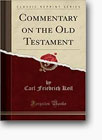Mithraism and Early Christianity
Sensationalistic portrayals of Jesus seem to be a dime a dozen these days, but rarely do these portrayals ever carry much force. Some people, such as the members of the Jesus Seminar, attempt to depict Jesus as an egalitarian wisdom teacher who never made any remarkable claims about himself. Others, such as novelist Dan Brown, have tried to make the case that Jesus had a child with Mary Magdalene. But the most extreme approach of critics of Christianity has been to deny the existence of Jesus altogether, relegating him to the realm of myths and legends. According to this view, the New Testament authors borrowed from contemporary pagan mystery religions and wove their teachings into a fanciful story about the life and death of a mythical messiah. One of the most frequently cited of these mystery religions is Mithraism, a Roman militaristic cult that is claimed to have striking parallels with Christianity. But on closer inspection, the parallels are not so striking after all, and where they do exist, the borrowing probably occurred in the other direction. I will begin by looking at the particular beliefs and practices of Mithraism, then consider theories concerning its origins, and finally evaluate arguments about its influence on early Christianity.
It is difficult to say exactly what Mithraists believed, because we have no surviving texts from them. What we do have are the writings of a few contemporary outside sources, although these sources are generally dismissed as biased and misinformed. Additionally, we have the archaeological remains of several Mithraic temples scattered throughout what used to be the Roman Empire. These temples usually look like caves, and contain statues of the god Mithras in the act of slaying a bull. Members of the cult (men only) would commemorate this act by sharing in a ritual meal, symbolizing the "blood and body" of the slain bull.1 Critics of Christianity have also claimed that Mithras was believed to have been born of a virgin on December 25th in a cave, to have had twelve disciples, and to have been buried in a tomb and raised from the dead three days later.2 The alleged parallels with Christianity are so numerous that one might be tempted to infer a direct relationship between the two religions. And since it is argued that Mithraism is several centuries older than Christianity, it must be the latter that borrowed from the former.
However, this interpretation is flawed on multiple levels. To begin with, it assumes that Mithraism is in fact older than Christianity. But this assumption rests on scholarship that is outdated by more than a century. In particular, it is based on the writings of the one individual who dominated Mithraic studies from the late nineteenth to mid-twentieth century, Franz Cumont. Cumont tried to make the case that Mithraism was a single, monolithic cult that existed in continuity from its earliest form in Iran until the Roman era. To be sure, we have written evidence of an Iranian god named Mithra that goes back at least as early as 1400 BC. But this pre-Christian Mithra of Iran had little in common with the later Roman god Mithras, other than their similar name and some kind of association with the sun (which many gods of the ancient world had in common). As a matter of fact, there is no evidence at all that the Iranian Mithra ever killed a bull, which is the most defining characteristic of the Roman Mithras. When the First International Congress of Mithraic Studies met in the early 1970's, they reached the conclusion that the Romans had borrowed the name of an Iranian god, along with a couple of other peripheral details, and repackaged it all in a new religion of their own creation.3 Therefore, when dealing with questions of the relationship between Mithraism and Christianity, one needs to differentiate between two very distinct religions called Mithraism—one early and Iranian, the other late and Roman.
Once this distinction is made, two things become clear. First, there are no significant similarities between Iranian Mithraism and Christianity. Second, any similarities between Roman Mithraism and Christianity are simply irrelevant, since Roman Mithraism was not established until well after the birth of Christianity. The worship of Mithra gradually moved westward from Persia after the conquests of Alexander the Great, adopting several features from local traditions along the way. Mithraism borrowed ideas and practices from the Phrygian cult of Attis and Cybele in Asia Minor,4 as well as astrological symbolism from the Greek Hipparchus. Mithra was first depicted as a bull-slayer in Pergamum in the second century BC, around which time Mithra may have been introduced to the Romans by the pirates of Cilicia.5 But the first reference we have to the Roman worship of Mithras is from the poet Statius, writing circa 80 AD.6 Additionally, there is no archaeological evidence of Roman Mithraism before this time. All of this goes to show that Mithraism underwent a radical transformation throughout the centuries, and its pre-Christian forms in no way bore any resemblance to Christianity. All of the alleged parallels come from a form of Mithraism for which we find no evidence until well after the birth of Christianity. So if copycatting did occur, it was probably the other way around.
Moreover, the parallels between Roman Mithraism and Christianity have been grossly overstated. For example, some have argued that Mithras was born of a virgin in the presence of shepherds. This is a serious distortion of the facts. According to archaeological evidence from a century after the New Testament period, Mithras was born as a full-grown adult out of solid rock, and shepherds helped pull him out when he got stuck.7 This is a far cry from the Gospel accounts of Jesus' birth. And even if Mithras was born on December 25th, this in no way undermines the historicity of Jesus. The Bible never claims that Jesus was born on December 25th. Rather, later Christians chose to celebrate Christmas on that day as part of a broader attempt to supplant pagan festivals with Christian holidays. As for Mithras' death and resurrection, the only evidence comes from the late second-century Christian Tertullian, who mentions his vague recollection of Mithra introducing an "image of a resurrection."8 But Mithra himself is not the one who is raised from the dead. And it is true that Mithraists shared in a ritual meal similar to the Eucharist, but what follows from that? Ritual meals are common to many religions, but that does not imply copycatting. In sum, the parallels between Mithraism and Christianity are either non-existent or far too generic to suggest that one borrowed from the other.
Finally, the genre and theological content of the Gospels stand in sharp contrast to Mithraism. The story of Mithras falls into the category of a creation myth, whereas the Gospels most closely resemble the ancient literary genre of historical biography.9 Mithras never existed as a historical person, whereas Jesus had many followers who later served as eyewitnesses.10 Mithras saved the world by slaying a bull, while Jesus atoned for the sins of the world by offering himself as a sacrifice. There is just no substantial overlap between these two religions. In the final analysis, the Christianity-as-pagan-copycat thesis hardly deserves anyone's attention. It rests on a foundation of bogus century-old scholarship that has long since been discarded.
Add Comment
Footnotes
1 https://members.optusnet.com.au/gakuseidon/God_Who_Wasnt_There_analysis_Part2.htm
2 S, Acharya. The Christ Conspiracy: The Greatest Story Ever Sold, p. 119
3 https://www.tektonics.org/copycat/mithra.html
4 https://www.newadvent.org/cathen/10402a.htm
5 https://www.farvardyn.com/mithras.php
6 Statius. Thebaid, Book I. 719, 720
7 Jones, Timothy Paul. Conspiracies and the Cross, p. 105
8 Tertullian. Prescription against Heretics, ch. 40
9 Blomberg, Craig. The Historical Reliability of the Gospels, pp. 298-303
10 Cf. Bauckham, Richard. The Gospels as Eyewitnesses











Comments